Market Research
Feb 16, 2024
By Ari Manor , CEO at ZOOZ

This is one in a series of articles that provide detailed and updated information about Marketing. In this specific article, which focuses on Market Research, you can read about:
- Market Research
- Why Marketing Research is Important
- SWOT Analysis
- Competitive Analysis
- Price Sensitivity Analysis
- Marketing Questions to Ask Clients
- Marketing Trends
- Analytics and Big Data for Marketing
- Marketing Science
For additional articles about Marketing, see the Topic Menu.

Market Research
Market research is a critical process that helps businesses understand their target customers, competitors, and market dynamics. It involves gathering, analyzing, and interpreting information about a market, including its size, trends, and customer needs, to make informed decisions. Effective market research can guide product development, marketing strategies, and overall business strategy.
Here's how to conduct comprehensive market research:
- Define Objectives: Clearly outline what you want to learn from your market research. Objectives may include understanding customer preferences, identifying market trends, or assessing competitive positioning.
- Choose Research Methods: Select appropriate qualitative and quantitative research methods. Qualitative methods (such as focus groups and interviews) explore attitudes and perceptions, while quantitative methods (like surveys and data analysis) measure and quantify aspects of the market.
- Identify Your Target Audience: Define the demographic, geographic, and psychographic characteristics of the potential customer base you wish to study.
- Collect Data: Gather information using chosen methods. This can involve primary research (directly from sources) or secondary research (existing data from reports, studies, and other publications).
 Case Study: LEGO’s Building Blocks of Research
Case Study: LEGO’s Building Blocks of Research- Company: LEGO, Global (Founded in 1932)
- What Was Done: Faced with dwindling sales and relevance, LEGO turned to extensive market research to understand the changing landscape of play. They reached out to children and parents through surveys, interviews, and observation to gain insights into their product development and marketing strategies.
- Results/Impact: The insights gained from their market research led to the successful revamp of product lines and the launch of LEGO movies and video games, which reinvigorated the brand. By 2015, LEGO had become the world’s largest toy company by revenue, with sales topping $2 billion.
- Analyze Data: Examine the data collected to identify patterns, trends, and insights. Use statistical analysis for quantitative data and content analysis for qualitative data.
 Case Study: Ahrefs’ SEO Research Success
Case Study: Ahrefs’ SEO Research Success- Company: Ahrefs, Singapore (Founded in 2010)
- What Was Done: Ahrefs, a small but powerful toolset for SEO and marketing, devoted itself to continuous market research to stay ahead of search engine algorithm changes. By doing so, they constantly updated their tools to provide valuable insights and maintained an educational blog that attracted a wide audience.
- Results/Impact: Ahrefs' dedication to market research translated into a product that's trusted by marketers around the world, boasting a $40 million annual recurring revenue by 2019 without any external funding.
- Interpret Findings: Translate your analysis into actionable insights. Understand what the data means for your business in terms of opportunities, challenges, and strategic direction.
- Report Results: Compile your findings into a report that outlines key insights, conclusions, and recommended actions. Ensure the report is clear and accessible to stakeholders.
- Implement Findings: Use the insights gained from market research to inform product development, marketing strategies, and other business decisions.
 Case Study: Sweetgreen’s Data Salad Mix
Case Study: Sweetgreen’s Data Salad Mix- Company: Sweetgreen, United States (Founded in 2007)
- What Was Done: Sweetgreen, a regional fast-casual restaurant chain, leveraged market research to customize its menu offerings based on local tastes and seasonal ingredients. They employed data analytics to track customer preferences and regional produce availability, leading to a dynamic menu that resonated with the local community.
- Results/Impact: This approach contributed to a loyal customer base and allowed for efficient inventory management. It supported their expansion, growing from a single location to over 100 stores. Their market research-driven menu innovation was a key ingredient in their recipe for a successful IPO in 2021.
- Monitor and Update: Market conditions change, so regularly update your research to stay informed about the latest trends, customer needs, and competitive movements.
Effective market research provides a foundation for making evidence-based decisions, reducing risks, and identifying opportunities for growth and innovation. It's an essential component of successful business strategy and operations.

Why Marketing Research is Important
Marketing research is vital for businesses to navigate competitive markets effectively and make informed decisions. It offers deep insights into consumer behavior, market trends, and the competitive landscape, guiding strategic planning and operational adjustments.
Here’s why marketing research is essential:
- Understands Customer Needs: It provides a thorough understanding of customer preferences, needs, and pain points, allowing businesses to tailor products and services accordingly.
- Identifies Market Opportunities: By analyzing market trends and customer data, businesses can identify new market opportunities, potential areas for expansion, or underserved segments.
- Informs Product Development: Insights from market research help in developing products that meet the market demand, reducing the risk of product failure.
 Case Study: Superhuman's Email Efficiency Market Fit
Case Study: Superhuman's Email Efficiency Market Fit- Company: Superhuman, United States (Founded in 2014)
- What Was Done: Superhuman placed significant emphasis on market research to refine their email client for speed and efficiency. They conducted user interviews and iterated their product based on direct feedback, ensuring a strong product-market fit.
- Results/Impact: Through diligent market research and application of feedback, Superhuman grew a waiting list of over 180,000 people by 2019, indicating strong demand and market fit for their premium email service.
- Enhances Customer Experience: Understanding customer expectations and feedback helps businesses improve the customer experience, increasing satisfaction and loyalty.
 Case Study: Vintage Vignettes’ Targeted Online Expansion
Case Study: Vintage Vignettes’ Targeted Online Expansion- Company: Vintage Vignettes, Pacific Northwest, USA (Established 2012)
- What Was Done: An e-commerce store specializing in vintage clothing, conducted extensive market research to understand its audience's online shopping behaviors and preferences, leading to a tailored UX design and curated product listings.
- Results/Impact: The research-informed changes led to a 60% increase in website conversion rate and a 30% increase in average order value within a year.
- Guides Marketing Strategies: Research provides data on the most effective marketing channels and consumer behaviors, allowing for more targeted and cost-effective marketing efforts.
- Reduces Business Risks: By providing data on market trends, competitive analysis, and consumer preferences, marketing research helps businesses make informed decisions, reducing the risk of costly mistakes.
- Supports Business Growth: With insights into market dynamics and consumer behavior, businesses can strategize for growth, tapping into new markets or increasing market share in existing ones.
 Case Study: Spotify’s Playlist of Consumer Insights
Case Study: Spotify’s Playlist of Consumer Insights- Company: Spotify, Global (Founded in 2006)
- What Was Done: Spotify’s marketing research goes beyond mere numbers; it dives into the emotional connection people have with music. Their research teams analyze streaming data to understand listening habits and cultural trends, influencing not only music recommendations but also marketing campaigns.
- Results/Impact: Their research-driven approach has been instrumental in Spotify’s growth. They have developed highly personalized user experiences, which have been pivotal in increasing their market share. By 2021, Spotify had over 365 million active users and was known for its curated playlists and discovery algorithms, which keep users coming back.
- Measures Success: Marketing research helps in setting benchmarks and measuring the effectiveness of marketing campaigns, providing feedback for continuous improvement.
In summary, marketing research is a critical tool that empowers businesses to stay customer-focused, competitive, and agile in their strategic and operational decisions. It lays the groundwork for sustainable growth and long-term success.

SWOT Analysis
SWOT analysis is a strategic planning tool used to identify and understand the Strengths, Weaknesses, Opportunities, and Threats related to business competition or project planning. This straightforward yet powerful framework helps organizations assess both internal and external factors that could impact their objectives.
How SWOT Analysis Can be Beneficial
- Strengths: These are internal attributes and resources that support a successful outcome. Identifying strengths helps businesses leverage their competitive advantages effectively. Examples include a strong brand reputation, a loyal customer base, or unique technology.
- Weaknesses: Internal factors that might hinder the achievement of an objective. Recognizing weaknesses allows businesses to manage and eliminate potential obstacles. Common weaknesses might include limited resources, gaps in service or product offerings, or areas where competitors have an edge.
- Opportunities: External chances to improve performance in the environment. Identifying opportunities enables organizations to explore new growth areas, markets, or strategies. Opportunities can arise from market growth, lifestyle changes, technological advancements, or regulatory changes.
 Case Study: Netflix’s Adaptation to Streaming Trends
Case Study: Netflix’s Adaptation to Streaming Trends- Company: Netflix, Global (Founded in 1997)
- What Was Done: Netflix’s SWOT analysis in the early 2000s revealed a shift towards online streaming as a critical opportunity. They capitalized on their strength in content delivery networks and adapted by transitioning from DVD rentals to streaming services.
- Results/Impact: This pivot was a colossal success. Netflix became the leader in streaming services, with over 200 million subscribers by the end of 2020. Their ability to align their strengths with market opportunities reshaped the entertainment industry.
- Threats: External challenges that could cause trouble for the business. By identifying threats, businesses can develop strategies to mitigate risks. Threats can include changes in consumer behavior, economic downturns, increased competition, or new regulations.
 Case Study: Trusty Plumbers’ Strategic Service Diversification
Case Study: Trusty Plumbers’ Strategic Service Diversification
- Company: Trusty Plumbers, Southeast USA (Established 2008)
- What Was Done: This plumbing service used SWOT analysis to identify strengths (expert team), weaknesses (limited service offerings), opportunities (growing local demand for eco-friendly options), and threats (rising competition). They expanded services to include eco-friendly and sustainable plumbing solutions.
- Results/Impact: Trusty Plumbers’ focused approach allowed them to capitalize on a niche market, resulting in a 35% increase in their client base over two years.
Key Elementys in Conducting a SWOT Analysis
- Gathering a team for brainstorming sessions to identify factors in each category.
- Analyzing and prioritizing the factors based on their potential impact.
- Developing strategies that leverage strengths and opportunities, address weaknesses, and mitigate threats.
The Benefits of SWOT Analysis
- Providing Insights: It offers valuable insights into your business and the competitive landscape, helping to inform decision-making processes.
- Strategic Planning: It aids in the development of strategic plans by aligning company objectives with real-world situations.
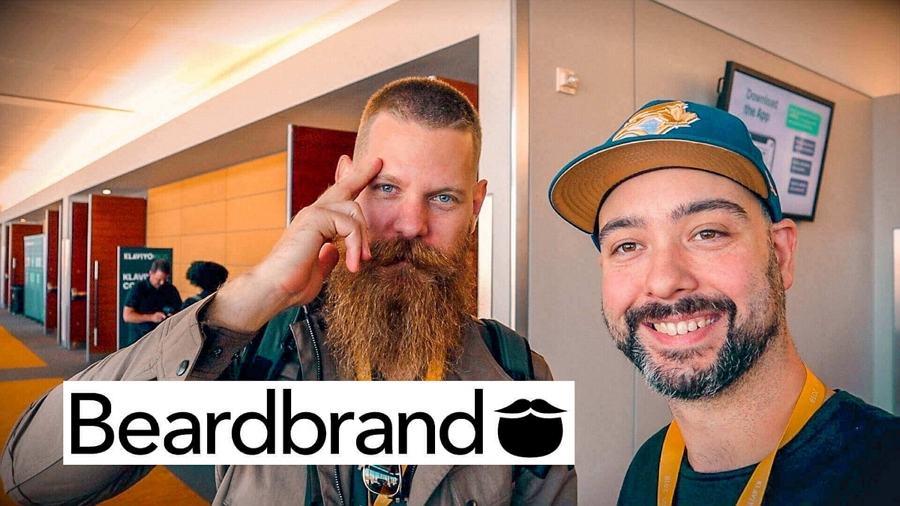 Case Study: Beardbrand's Grooming Identity Focus
Case Study: Beardbrand's Grooming Identity Focus- Company: Beardbrand, United States (Founded in 2012)
- What Was Done: Beardbrand used SWOT analysis to understand their position in the men's grooming industry, focusing on their strength of a strong brand identity and the opportunity presented by the growing trend of beard culture.
- Results/Impact: By leveraging their distinct brand and community, Beardbrand expanded its product line and established a substantial presence online and in retail stores like Target, highlighting the effectiveness of their strategy.
- Resource Allocation: It helps in prioritizing resource allocation by identifying where resources will be most effectively used.
- Risk Management: It enhances risk management by proactively identifying potential threats and developing strategies to avoid or mitigate them.
SWOT analysis is a versatile tool that can be applied to a wide range of situations, from business strategy development to personal career planning, making it an essential component of strategic planning. A good strategic plan should focus on leveraging strengths in order to exploit one or more opportunities.

Competitive Analysis
Competitive analysis is a crucial strategy that involves evaluating your competitors' strengths, weaknesses, strategies, and market positions to identify opportunities and threats within your industry. This analysis provides insights into the competitive landscape, helping businesses to strategize effectively and find competitive advantages.
 Case Study:
Case Study:
Blue Bottle Coffee’s Boutique Brews Battle
- Company: Blue Bottle Coffee, United States (Founded in 2002)
- What Was Done: Blue Bottle Coffee conducted a competitive analysis that helped them position themselves in the specialty coffee market. They focused on single-origin coffees and a unique store experience to differentiate themselves from larger chains like Starbucks.
- Results/Impact: The company grew a devoted fan base, attracted significant venture capital investment, and was acquired by Nestlé in 2017 for approximately $700 million, demonstrating the value of their niche market approach.
Here's how to conduct a comprehensive competitor analysis:
- Identify Your Competitors: Start by identifying both direct and indirect competitors within your market. This includes any business offering similar products or services or targeting similar customer segments.
- Gather Information: Collect data on your competitors' products, services, pricing, marketing strategies, distribution channels, customer experiences, and market reputation. Use sources like their websites, social media, customer reviews, and industry reports.
- Analyze Their Offerings: Evaluate the features, benefits, and limitations of your competitors' products or services. Understanding what they offer can help you identify gaps in the market or areas for improvement in your own offerings.
- Assess Market Position: Determine each competitor's market share, growth trajectory, and brand positioning. This helps us to understand their influence in the industry and their appeal to customers.
- Evaluate Marketing Strategies: Look at how your competitors market their products or services, including their advertising channels, messaging, and promotional tactics. This can reveal what resonates with your target audience.
- Understand Their Pricing Strategy: Analyzing competitors' pricing can provide insights into market expectations, potential price sensitivity, and opportunities for differentiation.
- Identify Strengths and Weaknesses: Based on your research, pinpoint the strengths that make your competitors formidable and the weaknesses that could be exploited.
- Spot Opportunities and Threats: Use the information gathered to identify potential opportunities for your business (e.g., underserved market segments) and potential threats (e.g., new competitors entering the market).
- Monitor Trends: Keep an eye on how competitors evolve over time. Regular monitoring can help you stay ahead of industry trends and adapt your strategy accordingly.
- Develop Strategies: Leverage the insights from your competitor analysis to refine your marketing strategies, product development, and overall business approach to better meet customer needs and outperform competitors.
 Case Study: Samsung's Smart Leap in Smartphone Market
Case Study: Samsung's Smart Leap in Smartphone Market
- Company: Samsung, South Korea (Founded in 1938)
- What Was Done: Samsung Electronics carried out an extensive competitive analysis in the mobile phone segment, identifying key areas to innovate and differentiate from competitors like Apple. They invested in advanced screen technology and diversified their product range to cater to all market segments.
- Results/Impact: By focusing on their competitive advantages, Samsung was able to become one of the leading players in the global smartphone market, achieving a significant share and competing head-to-head with Apple in premium smartphone sales.
Competitor analysis not only helps in understanding what you’re up against but also aids in identifying strategic opportunities for growth and differentiation. By staying informed about the competitive landscape, businesses can make more informed decisions, anticipate market shifts, and position themselves for long-term success.

Price Sensitivity Analysis
Price sensitivity, also known as price elasticity, refers to the degree to which the demand for a product or service changes in response to a change in its price. Understanding pricing sensitivity is crucial for businesses as it influences pricing strategies, product positioning, and overall profitability.
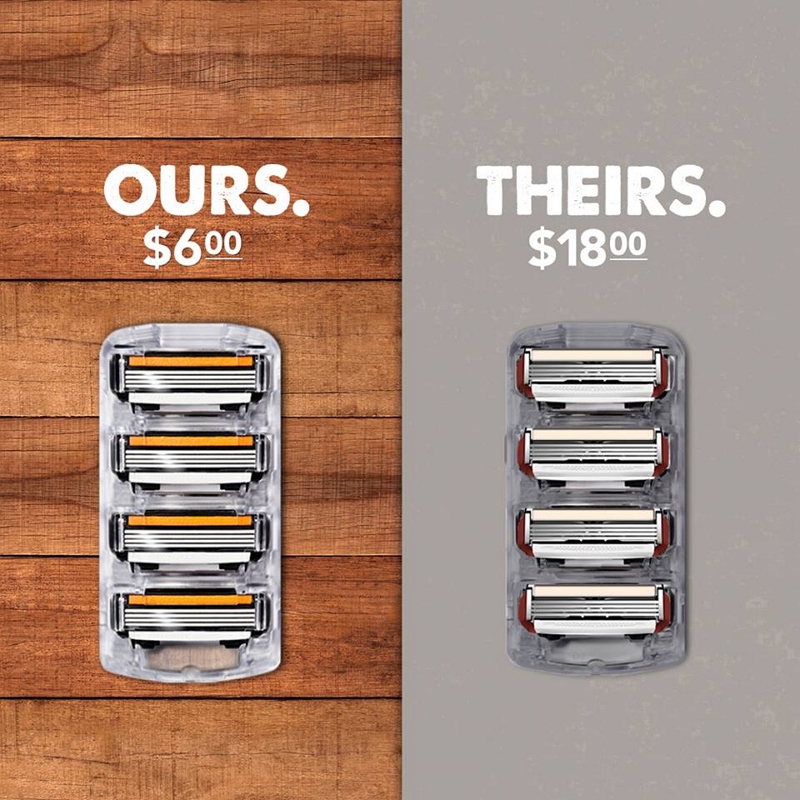 Case Study:
Case Study:
Dollar Shave Club Cuts Through the Market
- Company: Dollar Shave Club, United States (Founded in 2011)
- What Was Done: Dollar Shave Club utilized a pricing strategy that directly challenged the market's status quo. By offering a subscription-based service for razors at a significantly lower price than traditional brands, they targeted consumers' sensitivity to price in the personal grooming industry.
- Results/Impact: This approach disrupted the market and contributed to a rapid customer base growth, with reports of over 3 million subscribers by 2016. Their success led to Unilever acquiring Dollar Shave Club for $1 billion, validating the effectiveness of their pricing strategy.
Here's a brief overview on how to perform a Price Sensitivity Analysis:
- Measure Consumer Reaction: Pricing sensitivity gauges how consumers react to price changes, helping businesses determine whether a price increase will lead to a significant drop in sales or if a price decrease will substantially boost volume.
- Identify Optimal Pricing: By analyzing pricing sensitivity, companies can identify the price points at which they can maximize revenue and profit, taking into account the consumers' willingness to pay.
 Case Study: Tattly's Temporary Tattoo Trend
Case Study: Tattly's Temporary Tattoo Trend- Company: Tattly, United States (Founded in 2011)
- What Was Done: Tattly explored pricing sensitivity by offering high-quality, artist-designed temporary tattoos at a premium compared to traditional low-cost options. They tested various price points to find the balance between perceived value and affordability.
- Results/Impact: Tattly found a pricing sweet spot that maximized both sales and customer satisfaction, leading to collaborations with major brands and a diversified product portfolio that caters to a niche market for temporary tattoos.
- Segment Market: It allows businesses to segment the market based on price sensitivity. Different segments may have different sensitivities, enabling tailored pricing strategies for each group.
- Inform Promotional Strategies: Understanding which products are price-sensitive can guide promotional and discounting strategies, ensuring that price reductions are strategically applied to drive volume without unnecessarily eroding margins.
- Competitive Positioning: Knowing the price sensitivity of products helps in positioning them competitively in the market. Products with low sensitivity (inelastic) can afford to have higher prices, while those with high sensitivity (elastic) might require more competitive pricing.
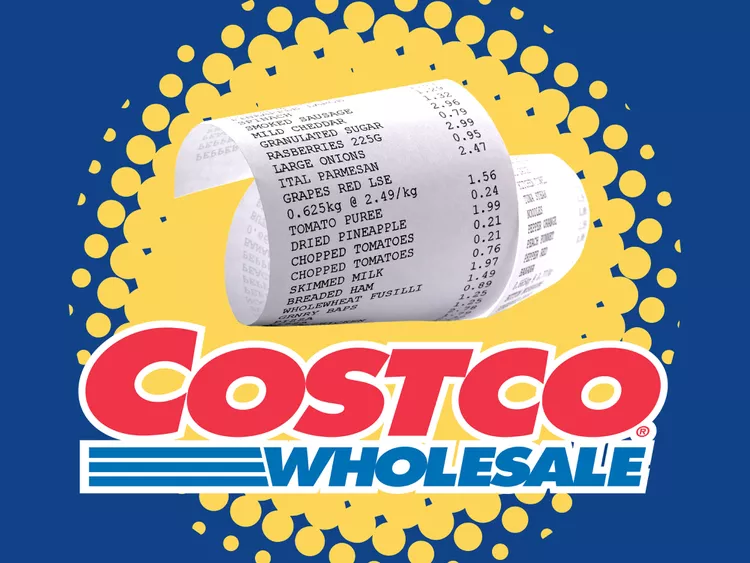 Case Study: Costco’s Wholesale Winning Strategy
Case Study: Costco’s Wholesale Winning Strategy- Company: Costco, Global (Founded in 1983)
- What Was Done: Costco’s marketing strategy hinges on the concept of price sensitivity. They provide a membership-based warehouse club where bulk purchases equate to substantial savings for consumers. Their limited-selection, high-volume business model allows them to leverage economies of scale.
- Results/Impact: As a result, Costco has maintained a loyal customer base, and as of 2020, it was the fifth-largest retailer in the world. Their ability to understand and apply pricing sensitivity effectively has been central to their enduring success.
- Product Development and Innovation: Insights into pricing sensitivity can influence product development. Products designed with features that reduce price sensitivity can command higher prices and margins.
- Dynamic Pricing: For industries where demand fluctuates significantly (like airlines and hospitality), understanding price sensitivity is key to implementing dynamic pricing strategies that adjust prices in real-time to optimize revenue.
 Case Study: Novel Nooks Bookstore’s Dynamic Pricing Strategy
Case Study: Novel Nooks Bookstore’s Dynamic Pricing Strategy- Company: Novel Nooks, Mid-Atlantic USA (Established 2010)
- What Was Done: Novel Nooks adopted a dynamic pricing strategy sensitive to pricing trends in the book industry, offering competitive pricing on bestsellers while pricing collectibles based on rarity and demand.
- Results/Impact: By adapting pricing in real-time and leveraging their unique inventory, Novel Nooks increased profitability by 20% and improved inventory turnover by 25%.
Businesses employ various methods to measure pricing sensitivity, including market experiments, consumer surveys, and historical sales data analysis. The goal is to strike a balance between pricing competitively and achieving desired profit margins, all while meeting consumer expectations and maintaining market share.

Marketing Questions to Ask Clients
Asking the right questions is crucial in developing effective marketing strategies for clients. Here are several recommended questions to ask clients to gain insights into their business, audience, goals, and challenges:
Understanding the Business and Objectives
- Can you describe your business in a few sentences?
- What are your primary goals for this marketing campaign?
- Who are your main competitors, and how do you differentiate yourself from them?
- What has been your most successful marketing effort to date?
- Are there any marketing tactics you've tried that haven't worked well?
Knowing the Target Audience
- Who is your ideal customer?
- Do you have buyer personas developed for your target market?
- What challenges do your customers face that your product/service solves?
 Case Study:
Case Study:
Salesforce’s Question-Led Product Innovation- Company: Salesforce, United States (Founded in 1999)
- What Was Done: Salesforce implemented a strategy of engaging with clients to uncover pain points in customer relationship management (CRM). Through in-depth questioning and customer feedback, they continuously enhanced their CRM platform to address specific user requirements.
- Results/Impact: This led to the development of a highly customizable and user-friendly CRM platform. Salesforce's commitment to understanding client needs contributed to their position as a leading provider of CRM solutions, with a revenue of over $21 billion in the fiscal year 2021.
- Where does your target audience spend their time online?
- How do your customers typically find you?
Delving into Products or Services
- What are your flagship products or services?
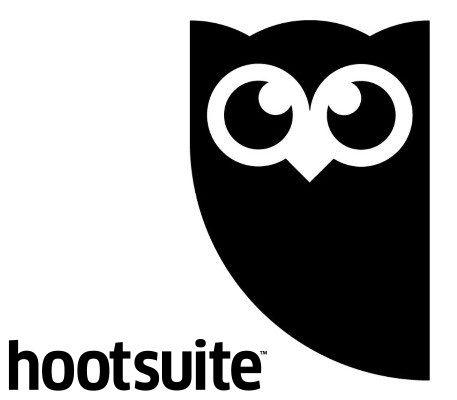 Case Study:
Case Study:
Hootsuite’s Client-Centric Platform Evolution- Company: Hootsuite, Canada (Founded in 2008)
- What Was Done: Hootsuite consistently engaged with clients through feedback mechanisms and direct dialogues to understand their needs and challenges in social media management. They used these insights to tailor their platform, adding features that marketers found most valuable.
- Results/Impact: This focus on client-driven development allowed Hootsuite to evolve into a comprehensive social media management tool, boasting over 18 million users by 2021. Their approach highlights the importance of asking the right questions to deliver solutions that resonate with the market.
- Are there any new products or services you're planning to launch?
- What are the key features and benefits of your products/services?
- How does pricing for your products/services compare to the competition?
Exploring Marketing and Sales Processes
- What does your current marketing mix look like?
- Can you describe your sales process?
- How do you currently measure marketing success?
- What marketing platforms or tools are you currently using?
- Do you have a content marketing strategy in place?
Identifying Challenges and Opportunities
- What are the biggest challenges your business is facing right now?
- Are there market trends affecting your business? How?
- What opportunities do you see for growth in the near future?
- How do you currently gather customer feedback?
Setting Expectations and Budget
- What is your budget for this marketing campaign/project?
- What are your expectations from this marketing effort?
- How involved do you want to be in the marketing process?
- What is your timeline for achieving your marketing goals?
Seeking Additional Insights
- Is there anything that's been overlooked in your previous marketing efforts that you'd like to address?
- How do you envision your business evolving over the next few years?
- What would make this marketing initiative a success in your eyes?
Asking these questions can provide a comprehensive understanding of the client's needs, preferences, and constraints, laying the foundation for a successful marketing strategy that aligns with their business objectives.

Marketing Trends
In the dynamic world of marketing, staying ahead means staying informed. Marketing trends, which represent the shifts in how consumers engage with brands, technology, and each other, are the compass that guides businesses towards areas of opportunity and growth. From the rise of social media as a dominant marketing platform to the increased importance of sustainability in brand messaging, trends shape the strategies that businesses adopt to connect with their audience. Understanding these trends is not just about keeping up; it's about predicting the future and adapting to it today.
How to Analyze Marketing Trends
Analyzing marketing trends is crucial for developing strategies that are both effective and forward-looking. Here’s how you can stay ahead of the curve:
- Stay Informed: Regularly read industry reports, news, and articles. Follow thought leaders and marketing influencers on social media platforms like LinkedIn and Twitter.
- Use Data Analytics: Leverage tools and platforms that offer insights into consumer behavior, market dynamics, and competitive landscapes. Google Trends, social media analytics, and customer feedback are invaluable resources.
- Attend Industry Events: Conferences, webinars, and workshops are excellent for gaining insights into emerging trends and networking with professionals who share their experiences and strategies.
- Conduct Surveys and Polls: Directly engaging with your audience to understand their preferences, needs, and behaviors can provide actionable insights and identify emerging trends.
- Analyze Competitors: Observing your competitors' strategies can offer clues about industry trends and how they are adapting to new marketing dynamics.
Benefits of Marketing Trends Analysis
Understanding and analyzing marketing trends offers a myriad of benefits, including:
- Strategic Agility: Equip your business with the ability to swiftly adapt to changes in the market, ensuring relevance and competitiveness.
- Customer Insights: Gain deeper understanding of your target audience's evolving needs and preferences, allowing for more effective and personalized marketing strategies.
- Innovation Opportunities: Identify new technologies, platforms, and methodologies that can revolutionize your marketing efforts.
 Case Study:
Case Study:
Netflix’s Trend Adoption with Original Content- Company: Netflix, Global (Founded in 1997)
- What Was Done: Netflix capitalized on the trend towards streaming services by producing high-quality original content, which attracted subscribers and reduced dependency on licensed content.
- Results/Impact: This strategy helped Netflix maintain its position as a market leader in the streaming industry, with over 200 million paid memberships in over 190 countries.
- Risk Management: Anticipate market shifts that could pose risks to your business and develop strategies to mitigate them.
- Enhanced ROI: By aligning your marketing strategies with current trends, you can achieve more efficient use of your marketing budget and a better return on investment.
 Case Study:
Case Study:
Allbirds’ Sustainable Footwear Trendsetting- Company: Allbirds, United States (Founded in 2014)
- What Was Done: Allbirds tapped into the emerging trend of eco-friendly products by marketing shoes made of sustainable materials. Their marketing emphasized comfort, sustainability, and simplicity.
- Results/Impact: By aligning with the sustainability trend, Allbirds grew rapidly and was valued at over $1.7 billion by 2020, carving out a substantial niche in the highly competitive footwear industry.
10 Recent Global Consumer Trends
Global consumer trends in 2024 identified by Euromonitor International highlight a range of consumer behaviors and expectations, influenced by advancements in technology, sustainability efforts, and the global socio-economic climate. Here's a summary:
- Ask AI: Consumers are engaging with AI as co-creators, influencing decisions and reshaping expectations of brand engagement, with a focus on personalization and improved customer experiences.
 Case Study:
Case Study:
Tailored Talk’s Personalized AI Chat Service- Company: Tailored Talk, United States (Founded in 2023)
- What Was Done: Tailored Talk introduced an AI-driven chat service for online retailers that personalizes customer service by learning from each interaction. Their platform uses natural language processing to understand customer inquiries, make product recommendations, and even handle complex customer service tasks.
- Results/Impact: Partnering with several mid-sized e-commerce brands, Tailored Talk helped increase customer satisfaction rates by 30%. The AI chat service not only provided personalized shopping experiences but also improved efficiency, reducing average customer service response times by half.
- Delightful Distractions: In seeking escapes from stress and anxiety, consumers are interested in personalized experiences tailored to their moods.
- Greenwashed Out: There's a growing skepticism towards the genuine impact of companies' and governments' sustainability efforts, with a call for tangible proof of eco pledges.
- Progressively Polarized: Political and social beliefs are increasingly defining personal identity, influencing consumer perspectives, values, and spending motivations.
- Wellness Pragmatists: There's a demand for fast, effective solutions to improve physical and mental well-being, with a focus on proven effectiveness.
- Value Hackers: Amid cost-of-living concerns, consumers are adopting strategic approaches to maximize their financial resources and secure the best deals.
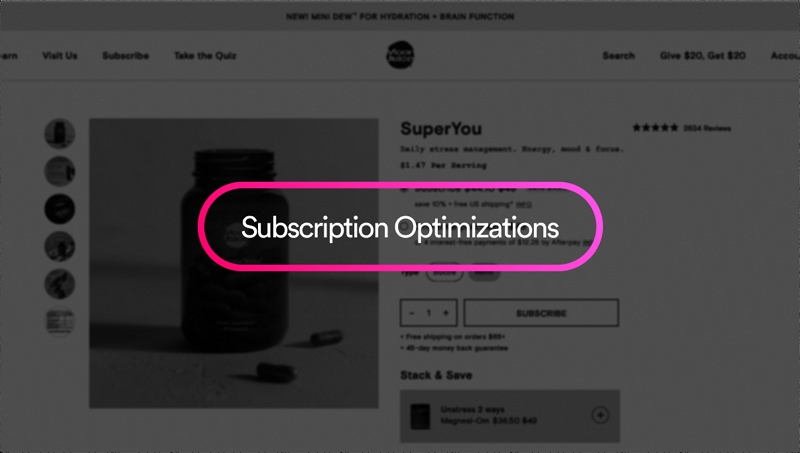 Case Study:
Case Study:
SaveSavvy’s Subscription Optimization App- Company: SaveSavvy, Ireland (Founded in 2023)
- What Was Done: SaveSavvy developed an app that assists consumers in managing and optimizing their subscriptions and recurring expenses. By tracking user spending and subscription use, it suggests cancellations or switches to cheaper alternatives and negotiates bills on behalf of the user.
- Results/Impact: SaveSavvy gained rapid popularity among cost-conscious consumers, with over 500,000 downloads within the first year of launch. The app reportedly saved users an average of 25% on their monthly subscriptions, validating the demand for tools that empower consumers to make more informed spending decisions.
Additionally, Mintel's insights for 2024 also emphasize the importance of human relationships, sustainability, and adapting to new realities shaped by AI and climate change. Some of their key trends include:
- Being Human: Highlighting the need for human skills and emotions in a tech-dominated world.
- More Than Money: A reassessment of what matters most to consumers, affecting perceptions of value.
 Case Study: EcoEssentials’ Ethical Market
Case Study: EcoEssentials’ Ethical Market- Company: EcoEssentials, Netherlands (Founded in 2022)
- What Was Done: EcoEssentials operates an online marketplace where every product sold has a direct impact on environmental initiatives. Beyond just transactional value, each purchase contributes to a specific conservation project, providing consumers with a tangible connection between their spending and its impact.
- Results/Impact: EcoEssentials attracted a loyal customer base that aligns with its mission, with a community that grew 100% organically through word-of-mouth and social sharing. The marketplace's approach resonates with consumers who look for more meaningful ways to spend their money, resulting in a 40% customer return rate.
- New Green Reality: The urgency of integrating sustainability into everyday life with a focus on survival within a changing climate.
- Relationship Renaissance: Seeking new forms of intimacy to counteract the isolation of screen-centric lives.
 Case Study:
Case Study:
Connectify’s Companion Matching- Company: Connectify, Australia (Founded in 2023)
- What Was Done: Connectify created a service that pairs individuals for virtual hangouts based on shared interests, using AI to foster new friendships and combat screen-centric isolation. The platform offers various modes of interaction, including virtual coffee chats, book clubs, and gaming sessions.
- Results/Impact: Connectify experienced a surge in user sign-ups, especially among remote workers and those in urban areas. Users reported increased feelings of connection and well-being, indicating the service's success in providing a sense of community and companionship in a digital age.
Top Recent Trends According to Industry
The following are some of the leading trends within five key consumer industries: Food, Fashion, Electronics, Furniture, and Education. These trends offer insights into the evolving preferences and behaviors of consumers across these five industries, reflecting broader society shifts towards sustainability, technology integration, and personalization. These trends not only mirror shifts in consumer behavior but also suggest the future direction these industries might take.
Food Industry
- Health and Wellness: There's a growing trend towards healthier food options, including organic, non-GMO, and plant-based alternatives, driven by a broader consumer interest in wellness.
- Convenience and Home Cooking: The pandemic has accelerated the trend towards home cooking, with consumers looking for convenient food options that do not compromise on quality.
- Food Technology Innovations: Technological advancements, such as lab-grown meat and AI in food production, are becoming more prominent, offering solutions to sustainability and supply chain challenges.
- Global Flavors: Consumers are increasingly adventurous in their food choices, seeking out global flavors and authentic culinary experiences.
- Sustainability and Ethical Production: Consumers are increasingly demanding transparency in how their food is sourced and expecting brands to adopt sustainable and ethical production practices.
 Case Study:
Case Study:
Imperfect Foods' Imperfectly Perfect Mission- Company: Imperfect Foods, United States (Founded in 2015)
- What Was Done: Imperfect Foods addressed food waste by selling 'imperfect' produce and groceries that might not meet the aesthetic standards of traditional retailers. They built their marketing and business model around the sustainability and ethical sourcing trend, with a direct-to-consumer delivery service.
- Results/Impact: Their mission resonated with environmentally conscious consumers, leading to rapid growth. By 2020, the company was delivering to over 400,000 customers, illustrating the market potential for businesses that prioritize sustainability and tackle ethical issues within the food supply chain.
Fashion Industry
- Sustainable Fashion: There's a significant push towards sustainability in fashion, with consumers favoring brands that prioritize eco-friendly materials and production methods.
- Digital Fashion and Virtual Try-Ons: AR and VR technologies allow consumers to try on clothes virtually, enhancing the online shopping experience.
- Resale and Second-hand Markets: The growth of the resale and second-hand markets reflects a more sustainable and budget-conscious approach to fashion.
- Personalization and Customization: Consumers are seeking personalized experiences and products, from custom-fit clothing to bespoke designs.
- Athleisure and Comfort Wear: The trend towards comfort, accelerated by remote work and lifestyle changes, continues to dominate the fashion industry.
Electronics Industry
- Smart Home Devices: The integration of AI and IoT in home devices, making homes smarter and more interconnected, continues to grow.
- Sustainability: There's an increasing demand for eco-friendly electronics, including recyclable materials and longer product lifecycles.
- 5G Technology: The rollout of 5G technology is enabling faster, more reliable internet connections, opening new possibilities for connected devices and services.
- Augmented and Virtual Reality: AR and VR technologies are becoming more mainstream, with applications ranging from entertainment to education and healthcare.
- Wearable Technology: The demand for wearable tech, such as fitness trackers and smartwatches, reflects a larger trend towards health monitoring and personal data.
 Case Study: Whoop’s Athletic Performance Insights
Case Study: Whoop’s Athletic Performance Insights- Company: Whoop, United States (Founded in 2012)
- What Was Done: Whoop created a wearable device that offers in-depth analysis on athletic performance, sleep, and recovery. They targeted the trend towards health monitoring and personal data by providing athletes and fitness enthusiasts with actionable insights.
- Results/Impact: Whoop attracted a dedicated user base, including professional athletes and fitness aficionados. By 2021, the company raised $200 million in Series F funding, highlighting the increasing consumer demand for personalized health data and its lucrative potential.
Furniture Industry
- Sustainable and Eco-friendly Furniture: Consumers are prioritizing furniture made from sustainable, recyclable, and non-toxic materials.
- Smart Furniture: Furniture with built-in technology, such as charging stations and speakers, is becoming more popular as homes become more connected.
- Minimalist Designs: There's a growing preference for minimalist, versatile furniture designs that fit well in smaller living spaces.
- Customization and Personalization: Consumers are looking for customizable furniture options that allow them to express their individual styles and meet specific needs.
- Home Office Solutions: The rise of remote work has led to an increased demand for home office furniture that is
both functional and comfortable.
 Case Study: Fully’s Ergonomic Home Office
Case Study: Fully’s Ergonomic Home Office- Company: Fully, United States (Acquired by Knoll in 2019)
- What Was Done: Fully specialized in ergonomic furniture for home and office use, focusing on the trend of remote work and home office setups. Their product line includes standing desks and ergonomic chairs designed to enhance comfort and productivity in a home setting.
- Results/Impact: The rise of remote work due to the pandemic saw a surge in demand for Fully’s products, as more people sought to create effective workspaces at home. The brand established itself as a leader in ergonomic furniture, which was underscored by its acquisition by Knoll, a global leader in office furniture.
Education Industry
- Microlearning: Short, focused learning segments are becoming more popular, catering to the needs of busy professionals and students.
- Gamification: The use of game elements in education is increasing engagement and making learning more enjoyable.
- Personalized Learning: AI and machine learning enable more personalized education experiences, adapting to individual learner's pace and style.
- Lifelong Learning: There's a growing trend towards lifelong learning, with adults seeking continuous education and skill development opportunities.
- E-Learning and Online Platforms: The pandemic has accelerated the adoption of online learning platforms, making education more accessible and flexible.
 Case Study: Coursera's Global Classroom
Case Study: Coursera's Global Classroom- Company: Coursera, United States (Founded in 2012)
- What Was Done: Coursera capitalized on the trend of e-learning by partnering with universities and organizations worldwide to offer online courses, specializations, and degrees. They made high-quality education accessible to anyone with an internet connection, focusing on both professionals seeking to upskill and students wanting a more flexible learning environment.
- Results/Impact: Coursera became one of the largest online learning platforms, with over 77 million learners by 2021. Their success demonstrated the scalability of online education and its potential to democratize learning across the globe.
Recent Global B2B Trends
Examples for top global B2B trends encompass a variety of strategies and technologies aimed at improving customer relationships, enhancing operational efficiency, and leveraging new marketing techniques. These trends highlight the increasing importance of personalization, digital transformation, and sustainable growth strategies in the B2B sector.
- Retail Media Networks (RMNs) in B2B: RMNs, traditionally associated with B2C, are making inroads into the B2B space, offering new opportunities for advertising on B2B ecommerce marketplaces. However, the industry is grappling with challenges related to measurement standardization.
- Personalized Customer Experiences: B2B companies are urged to provide more personalized shopping experiences, similar to B2C brands. This includes using customer data to tailor product recommendations and communication strategies.
 Case Study: Cvent's Event Management Customization
Case Study: Cvent's Event Management Customization- Company: Cvent, United States (Founded in 1999)
- What Was Done: Cvent, specializing in meetings, events, and hospitality technology, used customer data to personalize the event planning experience for their B2B clients. They provided tailored solutions for virtual, live, and hybrid events, drawing on user preferences and past behavior to enhance service delivery.
- Results/Impact: Cvent's commitment to personalization allowed them to host over 4 million virtual attendees by 2021. Their platform's ability to customize experiences contributed to increased client retention and positioned Cvent as a leader in the event technology industry.
- AI-powered Operations and Automation: AI is transforming B2B operations by automating workflows, enhancing productivity, and providing predictive insights into supply chain management.
 Case Study:
Case Study:
Smartly.io’s Advertising Automation Platform- Company: Smartly.io, Finland (Founded in 2013)
- What Was Done: Smartly.io provides an AI-powered advertising automation platform for B2B companies. They leveraged AI to streamline ad creation, optimization, and scaling across social media platforms, enabling marketers to focus on strategy and creativity.
- Results/Impact: By incorporating AI into their operations, Smartly.io improved ad performance and efficiency for their clients, leading to substantial business growth. They support over 2,500 brands and agencies, showcasing how automation can enhance B2B marketing strategies.
- Emergence of GenAI-powered Chatbots: Generative AI chatbots are improving customer service in B2B by providing round-the-clock support and personalized experiences.
- Data Clean Rooms for Measurement: To overcome challenges in omnichannel measurement, data clean rooms are being utilized for privacy-safe data sharing, enabling holistic attribution while maintaining consumer privacy.
- Self-service Customer Portals: B2B ecommerce is moving towards self-service models, allowing buyers to research and purchase products without the need for human interaction, catering especially to the preferences of millennial decision-makers.
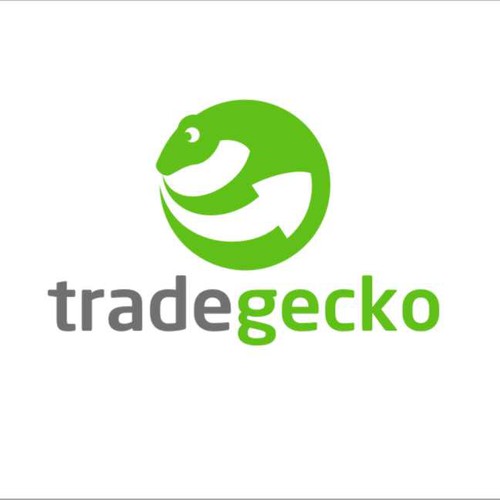 Case Study: TradeGecko's B2B Ecommerce Innovation
Case Study: TradeGecko's B2B Ecommerce Innovation- Company: TradeGecko (Now QuickBooks Commerce), Singapore (Founded in 2012)
- What Was Done: TradeGecko developed a B2B ecommerce platform offering self-service capabilities, allowing retailers to manage their orders, inventory, and customer data without constant sales rep interaction. The platform catered to the independent operations of small and medium-sized businesses.
- Results/Impact: TradeGecko’s self-service portal simplified B2B transactions, leading to rapid adoption by SMEs globally. The effectiveness of the platform was recognized by Intuit, which acquired TradeGecko in 2020, integrating it into QuickBooks as QuickBooks Commerce.
- Mobile-first Websites: With the increasing significance of mobile commerce, B2B companies are prioritizing responsive mobile websites and apps, alongside features like one-click checkout and mobile wallets to enhance the mobile customer experience.
- Original Research and Data in Content Marketing: To stand out, companies are creating content based on original research and data, offering unique insights that are highly valued by executive buyers.
- Social and Dark Social Commerce: B2B companies are leveraging social media platforms for marketing, focusing on providing educational content and engaging with their audience in a more authentic and personal manner.
- Headless Commerce Architecture: The adoption of headless commerce architecture allows B2B companies to update customer interfaces without overhauling the entire system, facilitating scalability and faster adaptation to market demands.
 Case Study: Fabric's Modular Ecommerce Solution
Case Study: Fabric's Modular Ecommerce Solution- Company: Fabric, United States (Founded in 2017)
- What Was Done: Fabric provides headless commerce solutions to B2B and B2C businesses, enabling them to design flexible and scalable ecommerce experiences. They separated the frontend and backend, allowing companies to update their online storefronts without extensive backend overhauls.
- Results/Impact: Adopting headless architecture allowed Fabric’s clients to quickly adapt to market trends and consumer demands. Fabric's approach attracted significant funding, with a $43 million Series A round in 2021, indicating strong confidence in headless commerce as a future-proof B2B ecommerce trend.
To conclude - analyzing and adapting to trends is not optional—it's essential. By staying informed, leveraging data, and maintaining a flexible approach to marketing strategy, businesses can not only survive but thrive. The ability to anticipate changes, understand the implications of emerging trends, and adjust course accordingly is what separates successful businesses from the rest. As you navigate the complex world of marketing, let the analysis of trends be your guiding star, leading your brand towards sustained growth and success.

Analytics and Big Data for Marketing
Analytics and big data have revolutionized marketing by offering unprecedented insights into consumer behavior, preferences, and trends. These tools empower businesses to make data-driven decisions, tailor marketing strategies, and ultimately enhance customer experiences.
Here's how analytics and big data are pivotal for marketing:
- Personalization and Customer Experience (CX): Tailoring marketing efforts and customer interactions to individual preferences and behaviors to enhance satisfaction and loyalty.
- Content Marketing Evolution: Creating interactive, immersive, and valuable content, including short-form videos, live streams, and educational materials to engage audiences.
- Digital and Social Media Marketing: Utilizing platforms like TikTok, Instagram, and LinkedIn for targeted advertising, influencer partnerships, and social commerce.
- Voice and Visual Search Optimization: Adapting content for voice-activated assistants and visual search technologies to improve online visibility and accessibility.
- Artificial Intelligence (AI) and Machine Learning: Implementing AI for predictive analytics, customer segmentation, personalized marketing, and enhancing marketing automation.
- Ethical and Purpose-Driven Marketing: Emphasizing brand values, sustainability, and social responsibility to connect with consumers on a deeper level.
- Privacy-First and Data Security: Focusing on consent-based marketing, data protection, and privacy to build trust with consumers amid growing data privacy concerns.
- Agile and Flexible Marketing Strategies: Employing adaptive marketing strategies that can quickly respond to market changes, consumer feedback, and new opportunities.
- Technology Integration in Marketing: Incorporating technologies like augmented reality (AR), chatbots, and conversational AI to create engaging and interactive customer experiences.
- Influencer Marketing Maturation: Evolving influencer collaborations towards long-term partnerships with a focus on authenticity and niche audiences.
- Customer Analytics and Big Data: Leveraging data analytics for deep customer insights, predictive modeling, and data-driven decision-making.
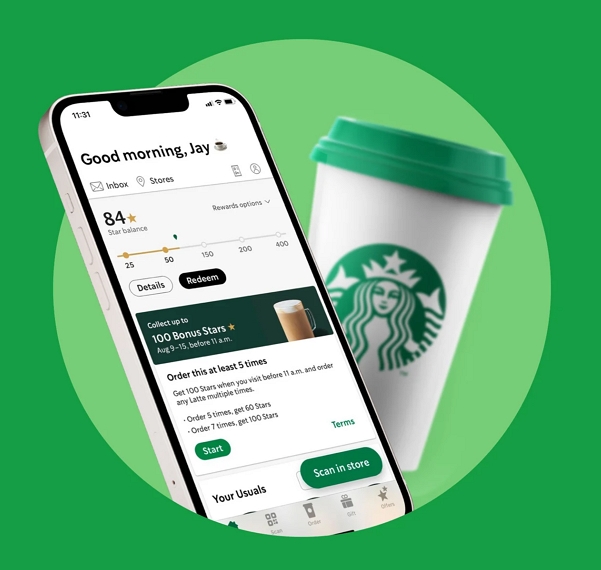 Case Study: Starbucks’ Grande-Sized Data Utilization
Case Study: Starbucks’ Grande-Sized Data Utilization- Company: Starbucks Corporation, Global (Founded in 1971)
- What Was Done: Starbucks harnessed the power of big data and analytics through their loyalty card and mobile app. This enabled personalized marketing, optimized store locations, and inventory management based on customer behavior and preferences.
- Results/Impact: By effectively utilizing big data, Starbucks achieved a deep understanding of customer habits, contributing to a 3% increase in revenue, largely attributed to the success of personalized offers and the ability to predict new store success with 80% accuracy.
- Omnichannel Marketing: Creating a cohesive customer experience across all channels, both online and offline, for seamless brand interactions.
- Dynamic and Real-Time Marketing: Utilizing real-time data to personalize offers, content, and interactions, meeting customers' immediate needs and preferences.
 Case Study:
Case Study:
Stitch Fix's Data-Driven Fashion Curation- Company: Stitch Fix, United States (Founded in 2011)
- What Was Done: Stitch Fix, an online personal styling service, leveraged data analytics and algorithms to personalize clothing selections for customers. The company used big data to predict trends, manage inventory, and tailor the user experience.
- Results/Impact: The integration of big data allowed Stitch Fix to thrive in the competitive e-commerce fashion market, growing to over 3.4 million active clients by 2019. Their stock price doubled within a year of their IPO, signaling the market’s confidence in their data-driven business model.
- Video Content Dominance: Prioritizing video content, including explainer videos, product demos, and storytelling, as a key engagement tool.
- Interactive and Ephemeral Content: Engaging users with content that requires active participation and leveraging temporary content for authentic interactions.
- Digital Detox and Mindful Consumption: Acknowledging consumers' desire for digital well-being and crafting marketing messages that respect this trend.
Embracing analytics and big data is no longer optional for businesses aiming to compete in the digital age. These tools offer critical insights that can drive strategic marketing decisions, optimize customer experiences, and ultimately contribute to business growth and success.

Marketing Science
Marketing Science" refers to a comprehensive and analytical approach to understanding and addressing marketing challenges through the application of scientific methods, statistical analysis, and data-driven decision-making. This discipline combines insights from economics, psychology, sociology, and mathematics to develop strategies that effectively engage customers and optimize marketing performance. Here's an overview:
Core Principles
- Data Analysis and Quantitative Methods: Utilizes statistical tools and models to analyze consumer data, market trends, and campaign effectiveness.
- Consumer Behavior: Applies scientific research methods to understand the decision-making processes of consumers and how various factors influence their purchasing choices.
- Predictive Modeling: Employs advanced algorithms and machine learning techniques to forecast future market behaviors, customer responses, and campaign outcomes.
- Experimental Design: Implements controlled experiments to test hypotheses about marketing strategies and tactics, ensuring that decisions are based on empirical evidence.
Applications in Marketing
- Segmentation and Targeting: Uses data analytics to identify distinct consumer segments and tailor marketing efforts to specific groups.
- Price Optimization: Applies economic and statistical models to determine optimal pricing strategies that maximize revenue and market share.
- Channel Optimization: Analyzes the effectiveness of various marketing channels (digital, traditional, social media) to allocate resources efficiently.
- Customer Lifetime Value: Calculates the projected value a customer brings to a company over time, informing retention and acquisition strategies.
 Case Study:
Case Study:
Coca-Cola's Optimization of Distribution Strategies
- Company: Coca-Cola, Global
- What Was Done: Coca-Cola applies marketing science through sophisticated data analysis and modeling to optimize its distribution and marketing strategies. By analyzing consumer purchase behavior and market trends, Coca-Cola efficiently targets its marketing efforts and distribution logistics.
- Results/Impact: These strategies have enabled Coca-Cola to maintain its position as a leading beverage company, showcasing the power of marketing science in enhancing operational efficiency and market reach.
Impact on Marketing Strategy
- Evidence-Based Decision Making: Encourages reliance on empirical data and scientific methods to guide marketing strategies, reducing the reliance on intuition or anecdotal evidence.
- ROI Measurement: Provides precise tools for measuring the return on investment of marketing activities, allowing for more accountable and efficient budgeting.
- Personalization and Customization: Enables marketers to personalize customer experiences and customize offers based on detailed understanding of individual consumer behaviors.
 Case Study: Netflix’s Use of Data Science in Marketing
Case Study: Netflix’s Use of Data Science in Marketing- Company: Netflix, Global
- What Was Done: Netflix employs marketing science by leveraging big data and analytics to personalize viewer recommendations and tailor its marketing campaigns. The company uses algorithms to analyze viewing patterns, which informs not only content recommendations but also the development and marketing of original programming.
- Results/Impact: This approach has significantly increased user engagement and retention, positioning Netflix as a leader in content streaming. It demonstrates the effective application of marketing science in creating data-driven strategies that resonate with consumers.
Challenges and Ethical Considerations
- Data Privacy and Ethics: Navigates the complexities of consumer data collection and use, emphasizing ethical practices and compliance with privacy regulations.
- Keeping Pace with Technology: Requires continual learning and adaptation to new analytical tools, data sources, and marketing platforms.
- Integration of Qualitative Insights: Balances quantitative findings with qualitative insights to capture the full spectrum of consumer behavior and market dynamics.
Future Directions
- Artificial Intelligence and Machine Learning: Increasing use of AI to automate data analysis, enhance predictive modeling, and personalize marketing at scale.
- Cross-Disciplinary Integration: Combining insights from behavioral economics, cognitive psychology, and social sciences to enrich understanding of marketing phenomena.
- Sustainability and Social Responsibility: Applying marketing science to promote sustainable consumer behaviors and ethical marketing practices.
Marketing Science represents the cutting-edge of marketing strategy and execution, offering a rigorous, evidence-based framework for understanding markets, engaging customers, and maximizing the effectiveness of marketing investments. It underscores the importance of a scientific mindset in navigating the complexities of modern marketing landscapes.
Marketing Strategy and Consulting
Interested in getting help with your marketing efforts and marketing strategy?
Contact us: info@zooz.co.il ,+972-9-958-5085
Marketing Articles
- Marketing Overview
- Marketing Goals
- Marketing Metrics
- Marketing Types
- Marketing Channels
- Demographic Marketing
- Marketing Business Models
- Industry-Specific Marketing
- Professional Services Marketing
- Marketing Strategy
- Market Research
- Marketing Communications (MarCom)
- Marketing Execution
- Makreting Careers
- Marketing Education
- Marketing Glossary (200 terms)
- Marketing Versus Other Disciplines
- Marketing Agencies and Outsourcing





